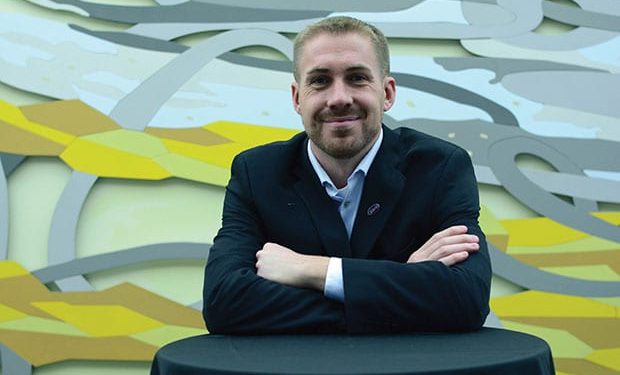1. How did you get started in the industry? What drew you to campus recreation?
I found campus recreation as an undergraduate student. Hours in the gym, incredible student employment opportunities within the Student Rec Center and memorable moments on the intramural fields sealed my fate. I saw the value the campus rec programs, services and facilities added to my student life experience. I was determined to find a path that would lead me into the profession.
Turns out my path was through Outdoor Recreation. Both my degree and my first professional experiences as an Alaskan sea kayak guide on Prince William Sound gave me the foundation I needed to develop my leadership skills, understand group dynamics, appreciate risk and grow outside my comfort zone (easy to do when sleeping in grizzly bear country).
Later on, I returned to graduate school and earned my master’s degree while holding two campus rec GA positions. I continued to build off the skill set Outdoor Recreation provided me, expanded my network and landed professional positions as a coordinator, assistant director and now a director. Campus Recreation fulfills the sense of adventure I’ve sought my entire life. To me, navigating an ice filled fjord in remote Alaska is just as exciting as developing programs, expanding facilities and providing services that positively impact the students we serve.
2. Throughout your time at MIT, what is one of the biggest changes that has taken place at the Rec Center?
Integrating technology with programming. Six years ago the market for wearable technology was nearly nonexistent. Now, most of our members expect trackers, monitors, apps and virtual screens. Our programs incorporate trackers into challenges and engagement opportunities and our cycling studios will soon display heart rate and training zones. This fall we’ll be launching instructor-led rowing classes with rowers that are fully connected and provide a chance for participants to row together in total synchronicity as a real crew. Our fitness assessments are enhanced with incredible new body composition measurement technology, and our group exercise programs are exploring virtual classes on demand.
3. Throughout your time at MIT, what is one accomplishment that you are most proud of?
I am exceptionally proud of the progress our team has made as it relates to personal growth, professional development, community engagement, volunteering within associations, assuming leadership roles on campus and even starting their own families. We celebrate the wins together, no matter how big or small.
4. What has been one of the biggest challenges?
Scaling for growth. Membership is at an all-time high, personal training has doubled, group exercises classes are oversubscribed in some instances and the relentless demand for our aquatic facilities has forced our team to introduce ingenuity and resourcefulness to every solution. How can we deliver more, ensure quality, engage all demographics and measure outcomes so that we can continue marching up the growth curve?
5. What is one lesson you have learned that other recreation professionals can learn from?
Our profession has evolved into a business, and a business skillset is becoming critically important in the preservation and enhancement of the world-class facilities, equipment and programs we directly manage. Recreation professionals need to be entrepreneurial as it relates to resource development and they need to perfect the craft of proposal writing and contract negotiation. We will increasingly be asked to develop net revenue producing business models that provide budget flexibility within the department and division.
6. Tell us one fun fact about yourself that others may not know?
I have a twin brother — fraternal. Before you ask, I’m the older one by 11 minutes.










